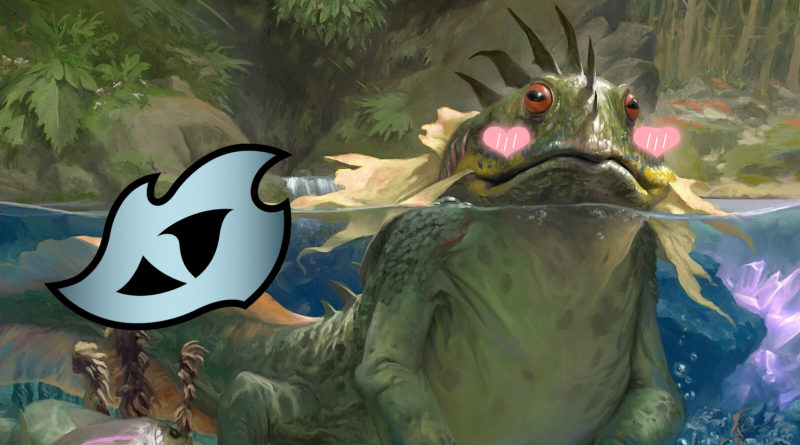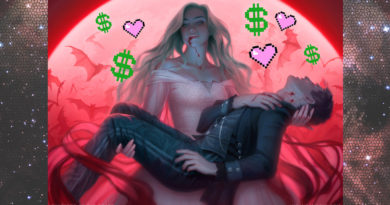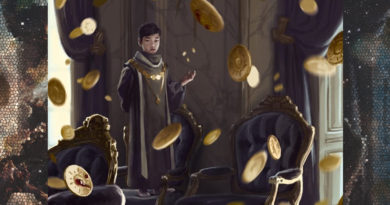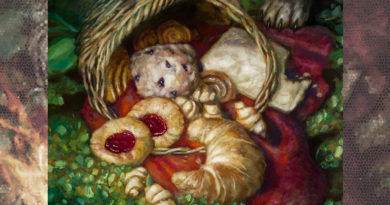7 Uncommon Loves from Ikoria
As the preview season for Ikoria: Lair of Behemoths kicked off, I paid extra attention to the uncommons. Flashy Mythic Rares get plenty of discussion and often end up dominating the championship tables, but I find uncommons to be a perfect representation of the set’s themes, and often offer some interesting build-around options for budget players. Here are the seven uncommons that I’ve come to love from Ikoria.
White has been hurting for a good one mana creature for a while now. Pelt Collector and Knight of the Ebon Legion are both fantastic cheap cards that can grow as the game goes on, and something like that should be central to white’s identity and playstyle, but was absent until this fox showed up.
It can attack for as much as 3 damage on turn two, however that would require a lot of eggs going into one basket – you won’t be developing your board if you’re devoting two mana to cycling two cards, but applying quick pressure could be the difference between victory and defeat against a slower control deck.
Cycling does appear in all five colors in Ikoria, with the best rewards in the Jeskai wedge (that’s white, blue, and red.) That said, are there enough cheap cycling cards in the format to make this fox work on the same level as Pelt Collector or Knight of the Ebon Legion? I’m skeptical.I would have preferred to see this card pushed just a bit more, and given text that triggered on any sort of discard, like we saw previously in Amonkhet with cards like Curator of Mysteries. Perhaps the fox will find a home in Pioneer (or on Arena, Historic) formats that can expand their options of cycling cards.
One core aspect of Magic’s design is that your spells have costs, and those costs are typically paid for by using the mana you get from your lands. Since you can only (normally) play one land per turn, there is a stable relationship between the number and power of the spells you can cast at a given point in the game.
Green is usually the color to break this relationship, often by using creatures that can produce mana themselves – things like Llanowar Elves, for example (Nicole’s favorite card!)
But even those must be tapped to be used, and generally offer a one-time bump in your mana production for a given turn. Pollywog Symbiote reduces the cost of every mutate creature spell you cast. Note that: You do not have to tap the Pollywog to do this This reduction applies whether or not you actually use the mutate ability of the creature you are casting.
This means the Pollywog can help you offset the cost of more than one spell per turn (unlike the Elves) and you aren’t even forced to stack those creatures into one easy to remove mutate pile. You can spread them out if you prefer.
If that was all the Pollywog did I would still consider it an excellent card to build a mutate deck around, but it even has another ability, and it’s one that works as a cast trigger. Cast triggers, along with cost reducers, are some of the most powerful abilities to abuse in Magic, and this innocent looking uncommon gives you both.
I’ve always been a sucker for reanimation effects (that is, cards or abilities that return creatures from your graveyard to the battlefield.) These can be really fun to build around, offering ways to ‘cheat’ out a huge creature without having to pay their expensive casting cost.
While Ikoria does have an “anything goes” reanimator spell in Unbreakable Bond, I’m much more interested in its smaller sibling, Call of the Death-Dweller.
One of my favorite Pauper cards is Unearth, and Call of the Death-Dweller feels like a cross between that and the powerhouse card Collected Company. So how can you use this undead-army-in-a-can spell to maximum effect? I’ve been experimenting with a deck on Arena that shows promise:
4 Knight of the Ebon Legion
4 Pelt Collector
1 The Ozolith
4 Mire Triton
3 Yarok’s Fenlurker
3 Kraul Harpooner
1 Chevill, Bane of Monsters
4 Call of the Death-Dweller
1 Embodiment of Agonies
3 Lovestruck Beast
3 Charnel Troll
4 Eat to Extinction
1 Cavalier of Night
12 Swamp
8 Forest
4 Overgrown Tomb
Pelt Collector and Knight of the Ebon Legion are two of the format’s best one-mana creatures, and bringing either back with a deathtouch or menace counter just makes them even more threatening. Mire Triton helps put targets into your graveyard, and can come back alongside either of the one drops.
The low curve and abundant self-mill cards (that’s putting cards from your own library directly into your own graveyard) should give you lots of options for firing off Call of the Death-Dweller.
The most interesting thing about this card is the hope it gives me for white (stay with me.)
Blue can draw cards, just by paying mana. (Divination , Spectral Sailor)
Black can draw cards, usually by sacrificing creatures or life. (Funeral Rites, Priest of Forgotten Gods) Green can draw cards, usually connected to creatures causing damage. (Keeper of Fables, Oakhame Adversary)
Red recently started getting what has been called “impulsive draw,” where cards go to exile and can be played from there for a small window of time before being lost forever. (Chandra, Fire Artisan, Light Up the Stage)
So that leaves us with white, which has the weakest card draw out of the five colors. By design, white is supposed to have the best answer cards, with the trade-off of always needing time to draw them (or it needs to get help from another color.) There have been some recent experimentations in giving white ways to draw cards on its own, but they tend to be tied tightly to a theme like lifegain (Dawn of Hope) or by affecting all players equally (Happily Ever After.)
Anyway, Rooting Moloch shows that Magic’s designers are not done inventing new ways to draw cards. Even though this is just another variation on impulsive draw, I can see something like this working for white. Imagine a creature like this:
Vengeful Lawmaker (2W)
Creature – Human Advisor (Uncommon)
Whenever you or a creature you control is dealt combat damage, you may reveal a card you own from outside the game and exile it. Until the end of your next turn, you may play that card. 1/4
Let white players stock their sideboard with answer cards and then be able to “draw” them in response to whatever is hurting them. That feels like it lets white “plan” for things (by having to include answers in their sideboard) but also puts a limit on how often they can drink from that well.
Mutate might go down in Magic history as one of the most difficult to understand mechanics the game has ever seen. Even once you do understand the rules on how to actually play with it, the strategic choices that come next are enough to mentally paralize even the best of us.
Recluse is a great example: played out as a regular creature, you get a two-three with reach for three mana. That’s on-par with what you’d expect to get on a green uncommon. Where it gets interesting is the mutate ability, because those extra two +1/+1 counters go on immediately. If you mutated, say, Llanowar Elves, they inherit more than the 2/3 from the spider. They are now actually a 4/5.
That’s not immediately apparent just by reading the card. You have to know that those counters happen on every mutation, including the one from the spider itself. This “hidden mode” makes Glowstone Recluse one of the best values mana-for-power wise among all the mutate creatures in Ikoria (and it gets better the more times you’re able to stack it up.)
Cycling itself does provide you with more options over the course of a game, and that can lead to you hitting land drops you otherwise would have missed, or, can find you creatures to cast when you’d otherwise be light on things to do later in the game (thanks, Savai Triome!)
While those tiny advantages are great, they don’t really compound into winning the game outright, the way stacking your mutations on each other to build a Baneslayer Angel can.
Zenith Flare provides a convenient win condition that grows more powerful as you cycle through more of your deck. Early on it can remove threats and provide a bump to your life total, often buying you time to draw (or cycle into) a second copy that you can aim right at your opponent’s face for lethal damage.
Being an instant makes this card a suitable reply to being milled out by an opponent using the Gyruda + Spark Double + Thassa gameplan, since you can cast it in your upkeep before you draw from your empty library (and your graveyard will presumably have enough cycle cards in it now to make your opponent regret their life choices.)
As we mentioned way back on Pollywog Symbiote, effects that reduce the cost of cards are really strong, so it’s no surprise another such card makes my list of favorites.
It’s even better when the cost reducer itself is cheap and easy to get into play. Cunning Nightbonder has flash, so you can sneak it in on your opponent’s end step, and then enjoy untapping on turn three with the ability to play four mana worth of spells.
Keep her alive one more turn (and make your land drops) and you’ll be able to cast Voracious Greatshark ahead of schedule, which can really ruin your opponent’s day.
There are plenty of other flash cards in Standard right now, and if you’re willing to limit yourself to just creatures you can even use Umori, the Collector as a companion and get a double-discount on them.
I’m working on a deck built around that idea:
4 Spectral Sailor
4 Foulmire Knight // Profane Insight
4 Cunning Nightbonder
4 Brineborn Cutthroat
4 Sea-Dasher Octopus
4 Brazen Borrower // Petty Theft
4 Murderous Rider // Swift End
4 Voracious Greatshark
3 Umori, the Collector
1 Dream Eater
12 Island
8 Swamp
4 Watery Grave
—
1 Umori, the Collector (Sideboard/Companion)
Those are my favorite uncommons from Ikoria: Lair of Behemoths, and now I want to hear about your uncommon loves so drop me a comment down below or over on our YouTube channel.










